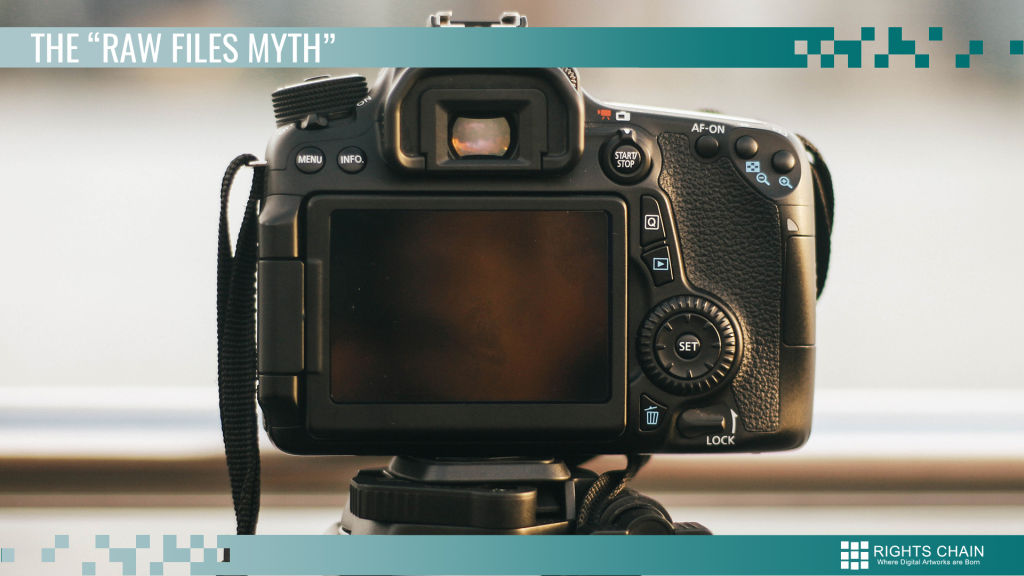The myth on the absolute certainty of RAW files

- 2018-06-06
- Sebastian Zdrojewski
- Copyright
Disclaimer: this series of blog posts is not aimed at judging the quality of RAW files, or suggesting one format over another. Technical and professional capacities belong to photographers, who know which is the best format for their pictures. Concerning validity of the files, or the IT used to handle it... well, this is someting we have a say on.
Picture: courtesy of "Il Mattia Lunardi"
Due to a professional quirk, whenever the "immutability" of a digital file is mentioned, the immediate reactions are reluctance and curiosity. Reluctance to accept the idea that data could be absolutely unchangeable, whereas curiosity pushes us to listen to the speaker, and look up information.
Something we heard a bit too often in the past months is:
"the RAW file is unchangeable, and it is irrefutable proof that I was the one to take the photo".
As a general rule, this can be true, until you actually need to prove it.
What is a RAW file?
When talking about pictures or photos, we tend to talk about JPEG, PNG, or other file formats, depending on the field. We can say however, that those are the two most popular ones in Internet file sharing. Through the years, manufacturers of high-level cameras have introduced the "RAW" format... which is not a file format.
RAW files are made up of a series of information which the electronic sensors within the camera can read directly. This "RAW" information has much wider visual features, compared to JPEG (for example), and they hold a much higher level of detail. Besides, it's not a compressed format, which would affect quality and details in favour of a smaller file, which is why the size of RAW files is often several tens of Mb while the same picture in JPEG format is a couple is a couple of Mb, at most.
It's not a standard
The natural consequence of RAW files being a data sequence read by the camera sensors, is that there is no market standard defining the format. Every manufacturer and every sensor use their own format to collect and read the data. This means that, for instance, it is uncertain whether a certain format will still be readable in 10 years' time, or more (for example, JPEG has been a standard since 1986).
For example, in forensic photography, this is a big issue, as they cannot be attached to documentation, they require specific programs to be opened, and should be stored for a long time (let's consider that copyright protects works for at least 70 years).
As a matter of fact, standards can also accelerate legal procedures in case of need. In case of dispute of a photo through social network "flagging" procedures, the disputer is required to sumbit a JPEG file or a proof of ownership of the photo, and this cannot be done with the RAW file (or a picture of the RAW file open on your desktop).
It's not unchangeable
Any file that is not properly stored can be altered. The editing programs themselves can modify the metadata within the file, as well as the creation date. Although they don't change the image in itself, they alter certain file properties which can make the difference between "we're gonna win" and "we can make it" in a lawsuit:
- digital signature of the original file
- date when the file was last modified.
In the legal world, it is customary to create digital signatures (or "hashes") of files to prove that the file was not changed since the signature was made. If a single character in the metadata, or a pixel of the picture are altered, the digital signature will no longer be valid, and the work will lose its consistency. In other words, the file was changed, and proving the opposite would be hard from a legal standpoint, even if the picture "looks" identical.
Computers are a problem with dates. When copying the file from the flashdrive to the PC with the regular copy-paste tool, the file creation date will be updated to the current date. This is not an issue at first, as the Artowrk itself does not exist yet, but it could become annoying when copying it again on a USB drive, to keep a copy as a record, for instance.
In any case, neither the creation date or the last modification date are reliable data until they are handled with specific technical procedures, and we can assure you that the Windows time alone (or Linux, or any other Operating System, for that matter) is not enough to be considered certain in legal terms. Date of acquisition is instead saved in the metadata, so... see above.
Not everyone accepts RAW files
Difficulties with these types of files are not exclusive to the technical field; they also apply to the professional one. During our research on the matter, we found an interesting aricle on the subject: the Reuters agency has stated in their guidelines that sending RAW photos is not allowed (some information is available on PetaPixel and TheVerge) with the addition that a photographer is allowed to acquire a photo in a RAW format if desired, but that they also need to acquire the JPEG format.
As said in the introduction to this post, we do not intend to suggest which is the best way to take photographs, but rather to give a wider view on the the aspects hiding behind the digital world, through our own first-hand experience.
